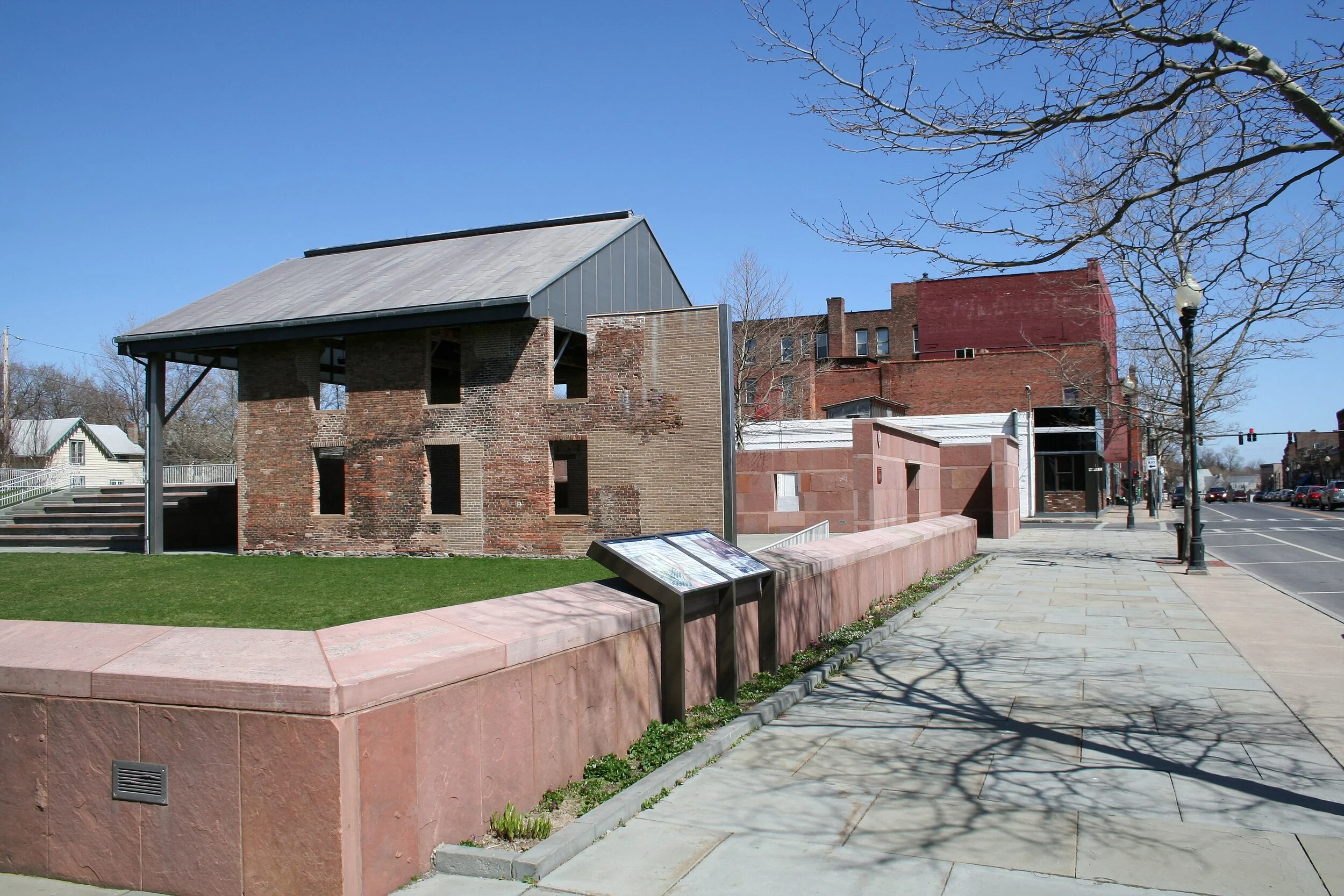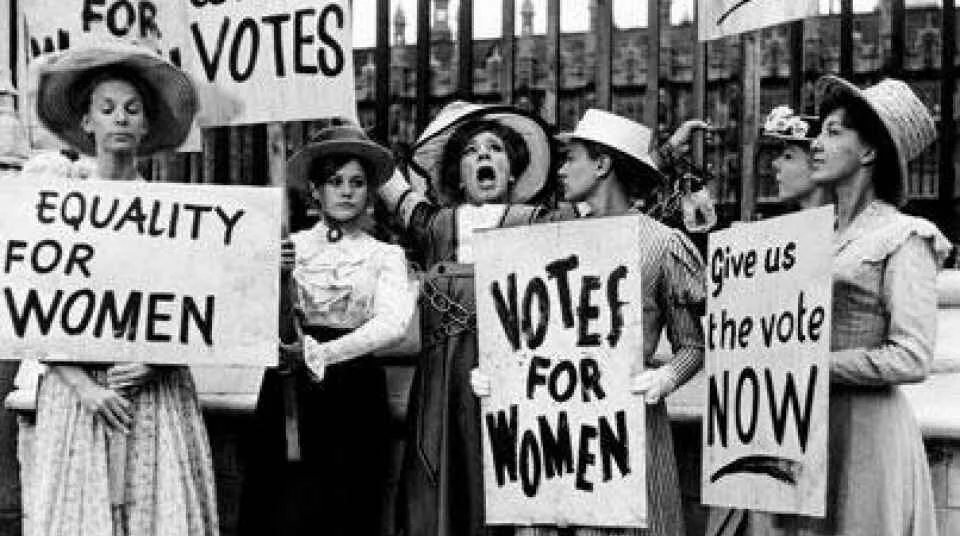Road (Trip) to Women’s Suffrage
The Finger Lakes region of New York is a great vacation spot, with scenery, wineries, and a relaxed vibe. The area also played a critical role in women’s history, specifically women’s suffrage, which celebrates its 100th anniversary this year.
On August 18, 1920, the Nineteenth Amendment to the U.S. Constitution — granting women the right to vote in all elections — was ratified by the state of Tennessee, the last of the 36 states needed to pass it. The U.S. Secretary of State certified the amendment on August 26, which would come to be known as Women’s Equality Day.
In July 1993, I traveled to Seneca Falls with my husband, Tom Shaffer, and my mom, Florence Thompson, to participate in the opening of the Women’s Rights National Historical Park Visitors Center. The center stands on the location where the 1848 Women’s Rights Convention was held. At that convention, the delegates ratified the Declaration of Sentiments, modeled on the Declaration of Independence, stating that women should be granted the vote.
Wesleyan Chapel, part of the Women's Rights National Historic Site in Seneca Falls, New York. Photo by the National Park Service.
What we had thought would be a one-day history exploration turned into much more. After lunch at the storied Hotel Gould, my mom noticed a “For Sale” sign in the hotel window. “Should we buy it?” she asked.
My mom was a feminist extraordinaire who had created lots of “good trouble” in Bloomsburg, Pennsylvania, after moving there in 1963. She saw all the reasons we should buy the place. For one thing, so many sites connected to women’s suffrage are nearby, including the National Women’s Hall of Fame and the homes of Elizabeth Cady Stanton, Harriet Tubman, and Susan B. Anthony. So we bought it.
Tom Shaffer, with son Brian, in the bar of the Hotel Gould in Seneca Falls, New York, in 1994.
During the 364 days we owned the Hotel Gould, Tom and I adopted our son Brian. He learned to crawl on those floors and to belly up to the bar for a drink. My mom volunteered at the national park and got involved with the downtown business association. We met a number of notable women, including Dr. Antonia Novello, the first woman and first Hispanic to become U.S. Surgeon General, as she was inducted into the National Women’s Hall of Fame. In the audience at that ceremony was former congresswoman Bella Abzug.
Our experience in and around Seneca Falls opened our eyes to the enormity of the struggle for universal suffrage. We have continued learning ever since, gradually gaining insight into the many facets of that struggle. There is much to learn. The relationship between suffragists and abolitionists was intertwined and conflicted. African American women played an important and under-recognized role in both struggles. There were arguments about strategy. Many suffragists endured brutality, as when those imprisoned for their activism went on hunger strikes and were force-fed. Suffragists’ protest marches in front of the White House were the first such protests in our country.
Five days after the 2016 elections, wanting to learn about other turbulent times, Tom and I visited the Alice Paul Institute in Mount Laurel, New Jersey. Paul was one of the leaders in the fight for women’s suffrage. Although we knew she had attended Swarthmore College, and that a dorm on campus was named in her honor, we didn’t know the particulars of her contributions to women’s suffrage. It turns out she did a lot!
A Quaker, Paul grew up attending suffrage meetings with her mother. Later, while studying in London, she met militant suffragists and adopted their tactics. As a result, she was imprisoned and went on hunger strikes. After the deaths of suffragist leaders Susan B. Anthony and Elizabeth Cady Stanton, Paul returned to the U.S. and became a suffrage movement leader. She created the National Woman’s Party and organized marches, protests, and hunger strikes. In the end, her efforts gained the support of the American public.
After suffrage was achieved in 1920, Paul advocated for the Equal Rights Amendment, which has just this year garnered its 38th state ratification (though the amendment’s fate is still unclear). She also founded the World Woman’s Party, and successfully lobbied to include language about women’s equality in the charter of the United Nations.
The struggle for women’s equality continues. Women are more than 50% of the U.S. population, but are significantly underrepresented as legislators, executives, entrepreneurs, and models for public monuments. Women’s history is underrepresented in history books, curricula, and the media. Since 2020 is the 100th anniversary of the victory for women’s suffrage, it would be a great year to visit (in person or virtually) some of the many significant places that saw such amazing history being created.
I would certainly recommend a visit (only virtually for the time being) to the Alice Paul Institute (API), at Paulsdale, the house where Alice Paul was born, in Mount Laurel, New Jersey. At API, you can do research with original documents and see a timeline and artifacts of the struggle. A one-hour guided tour and a 15-minute video about Paul’s life are windows into the experiences that motivated her lifelong quest for equality for all.
Women’s Suffrage Resources
General Timeline of Events Leading to Women’s Suffrage
Historic Sites
Near Philadelphia:
Alice Paul Institute, Mount Laurel, New Jersey
In the Finger Lakes area in New York State:
In Seneca Falls:
In other Finger Lakes area towns:





